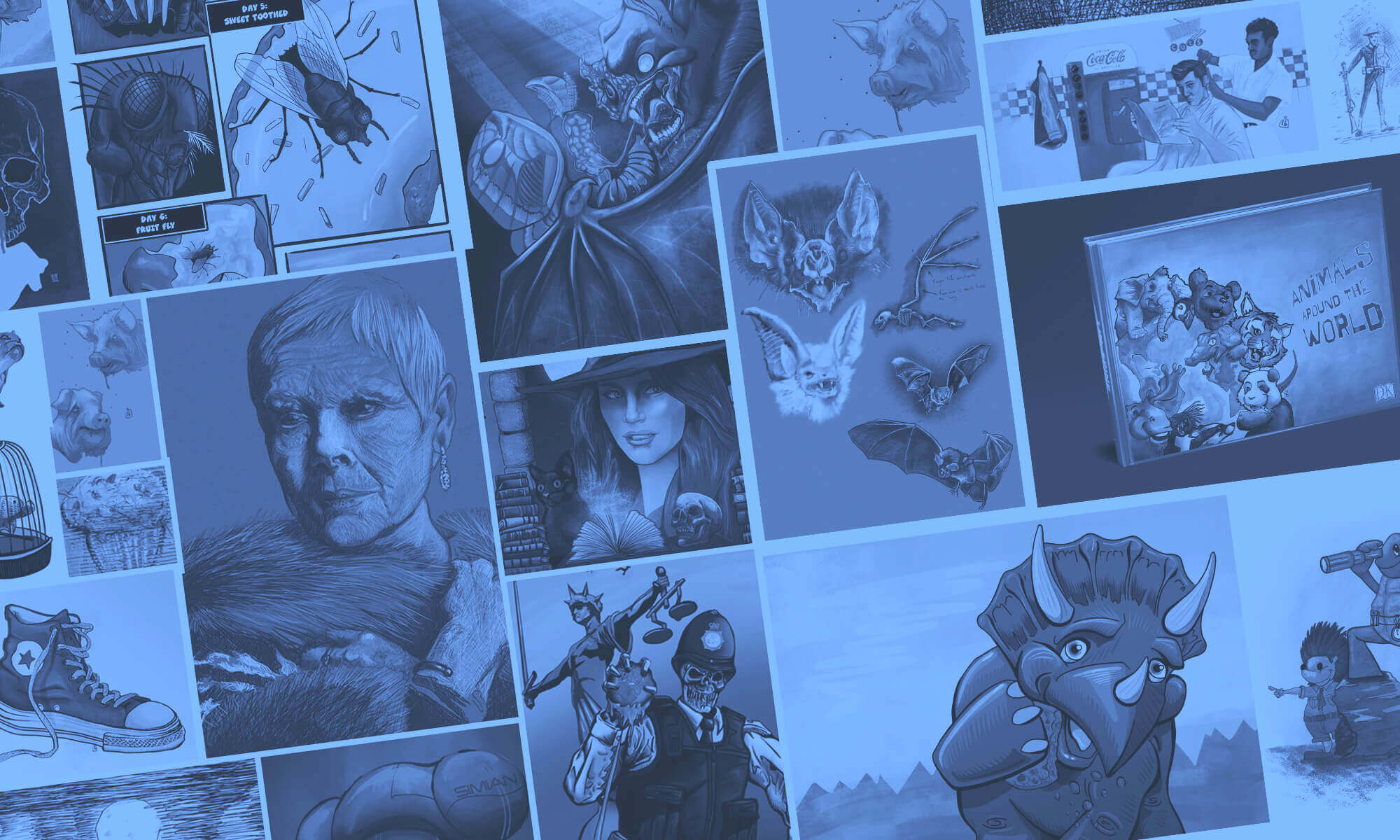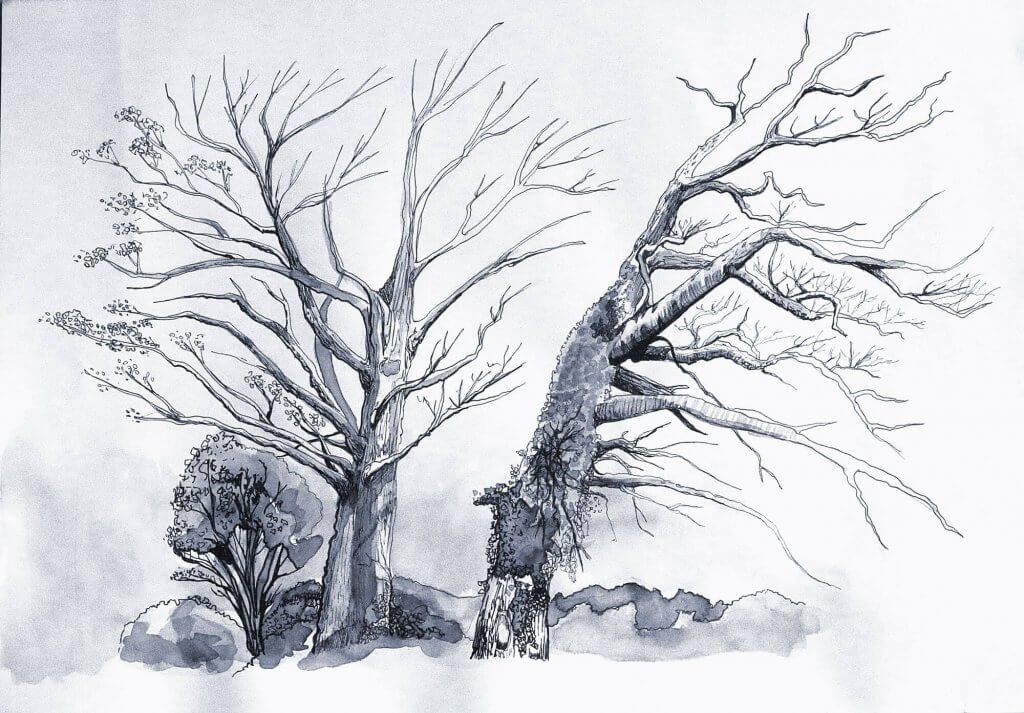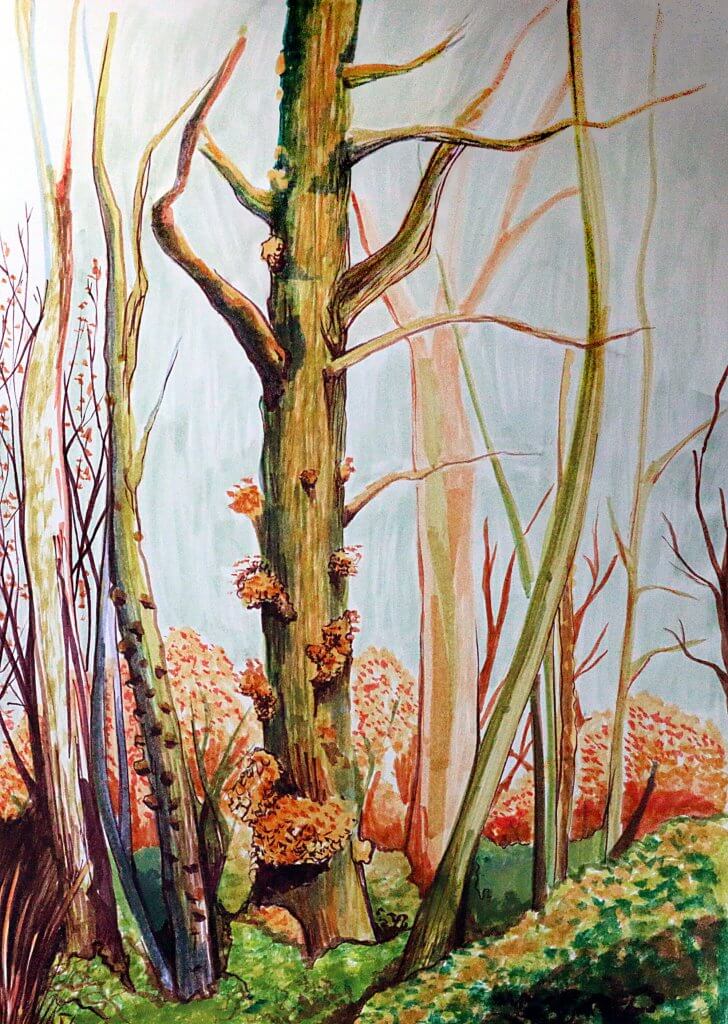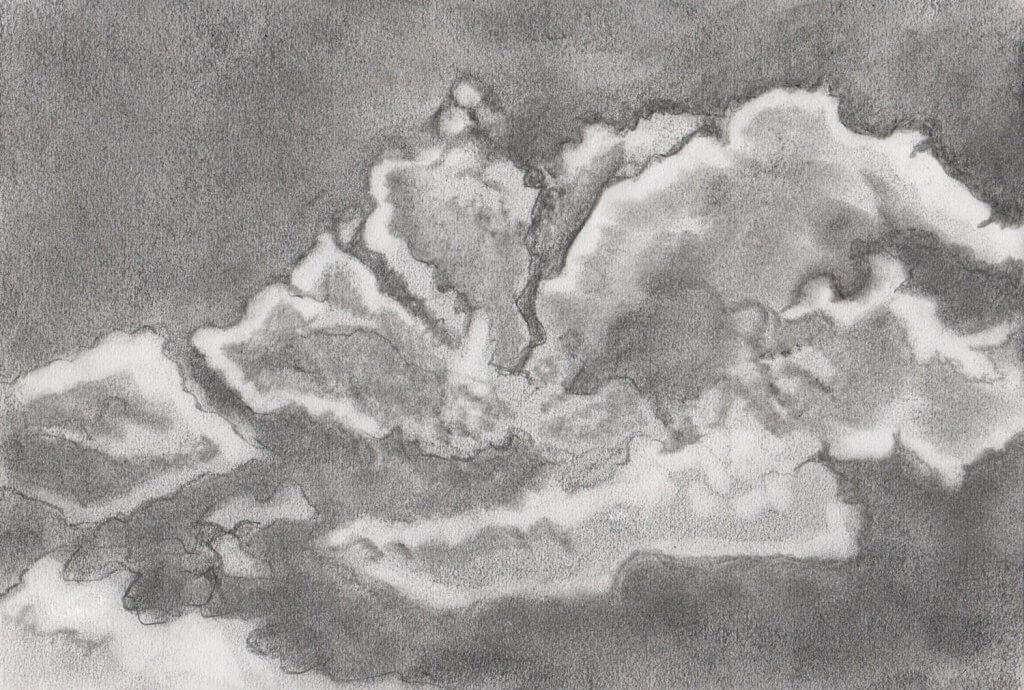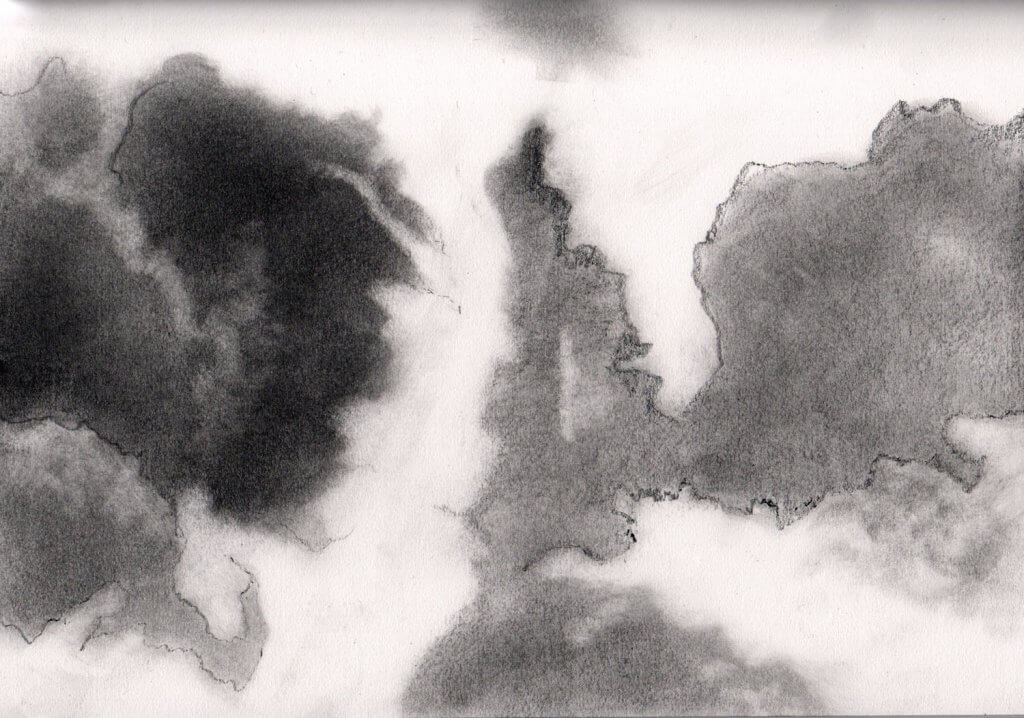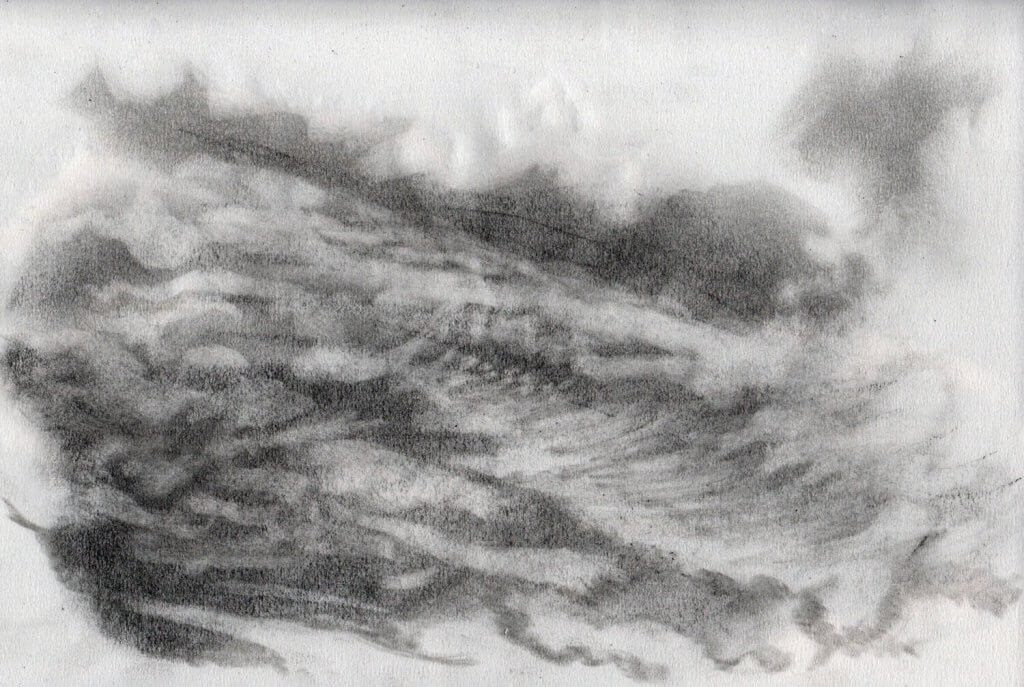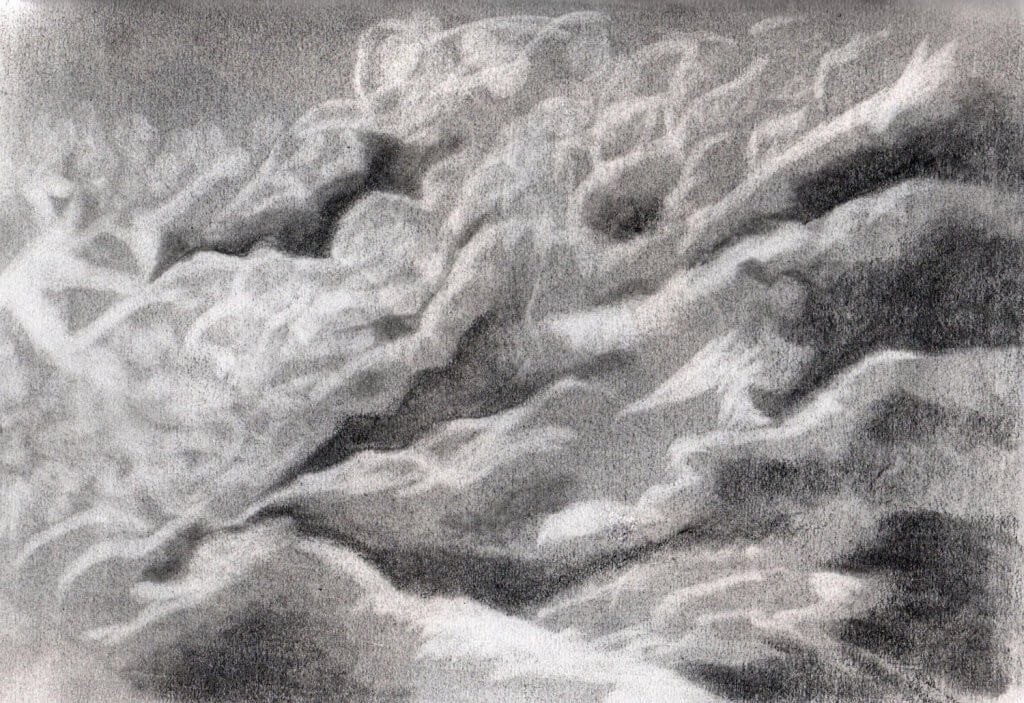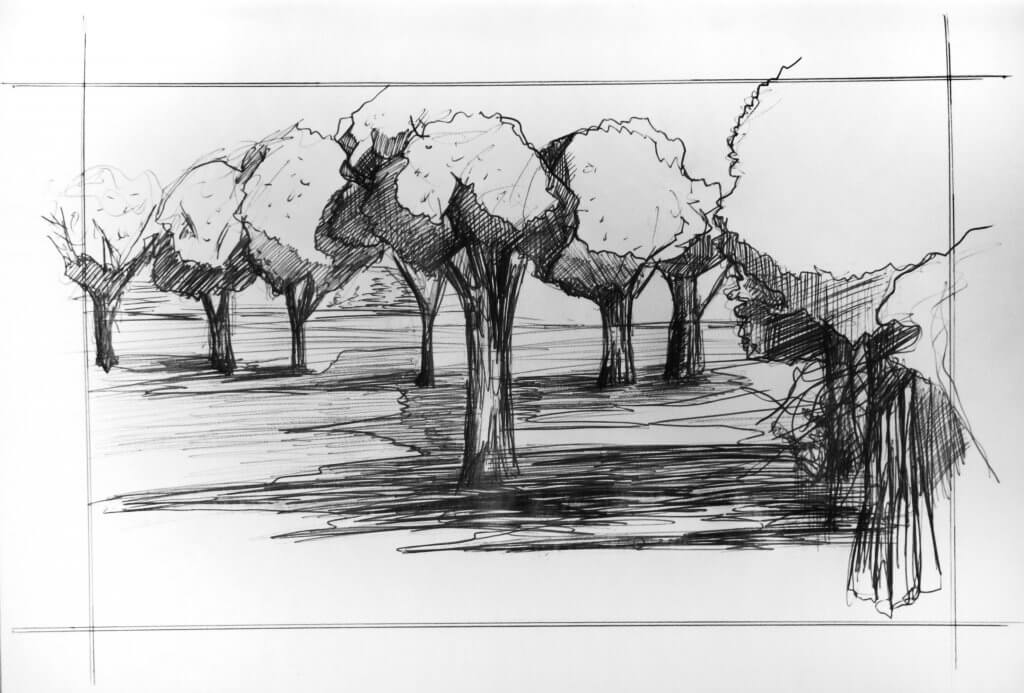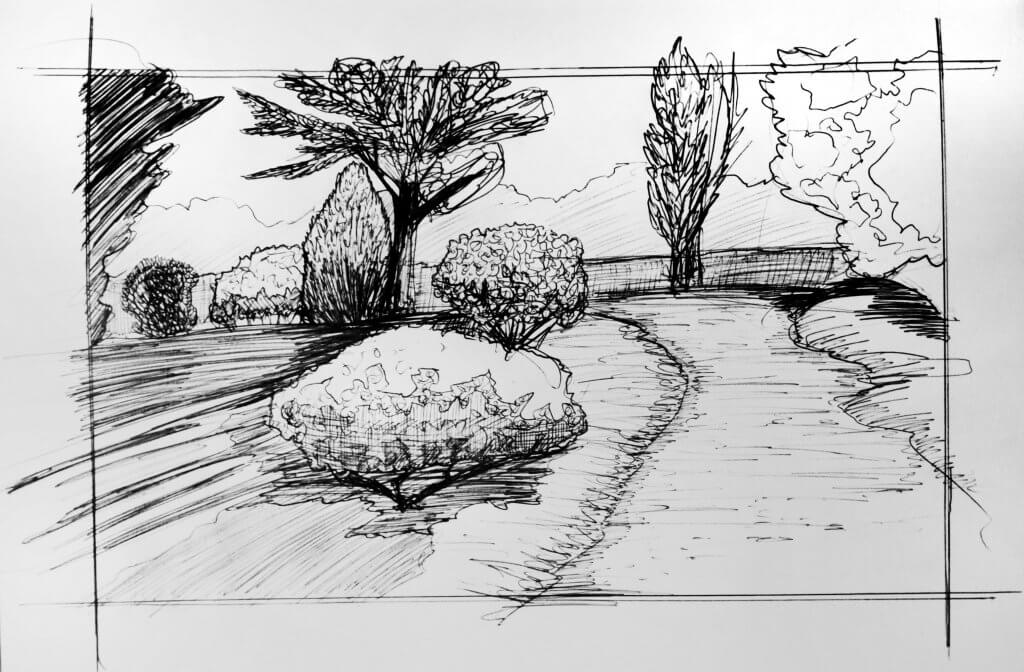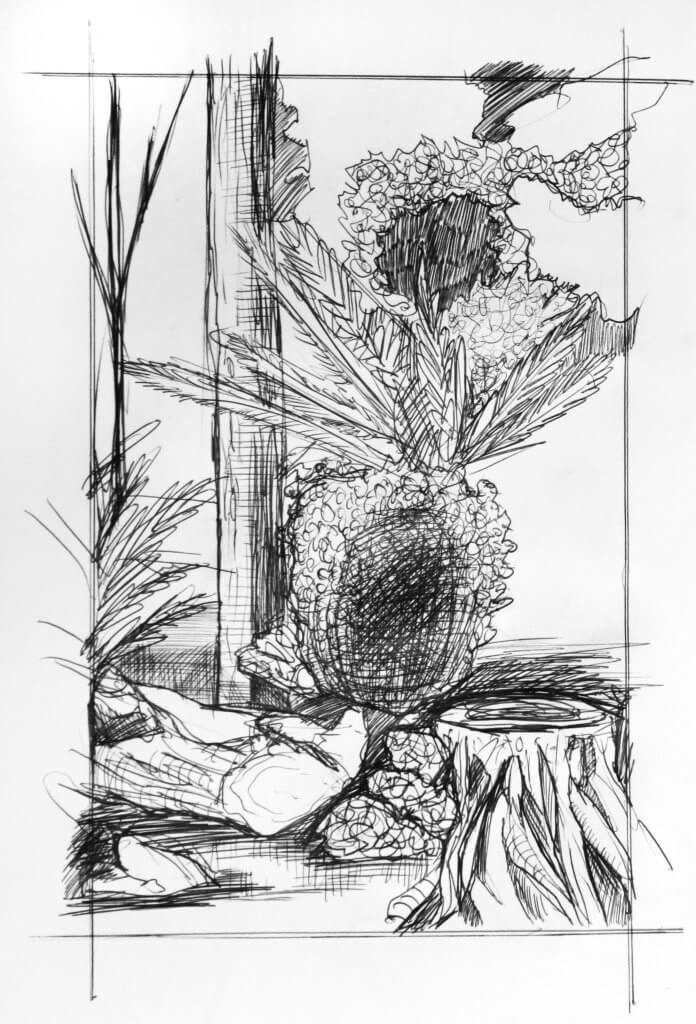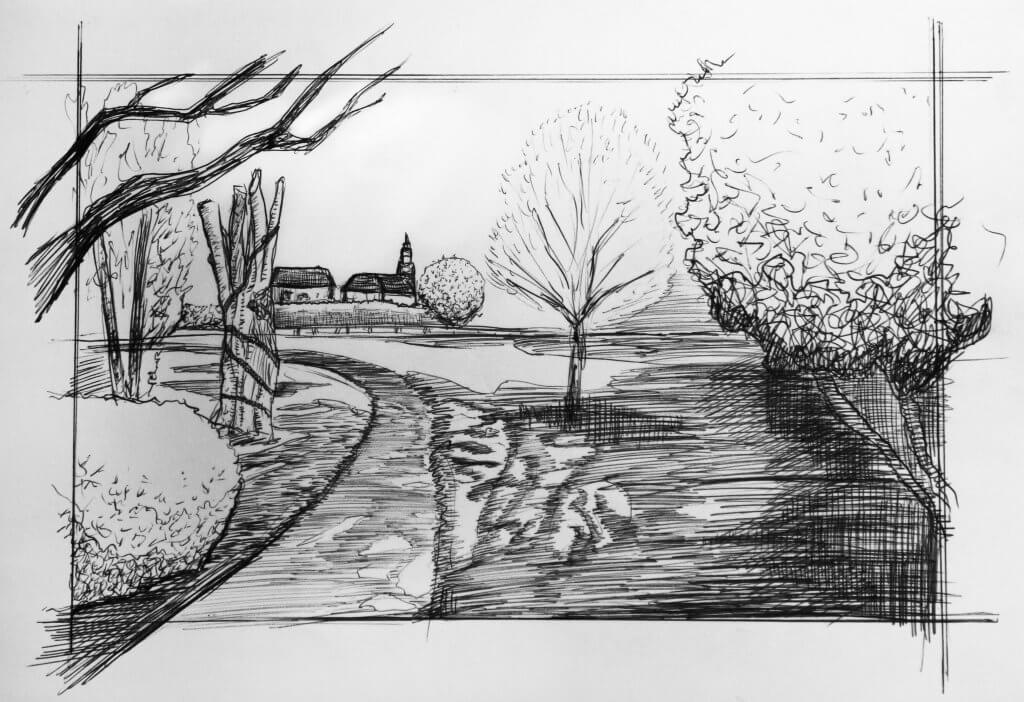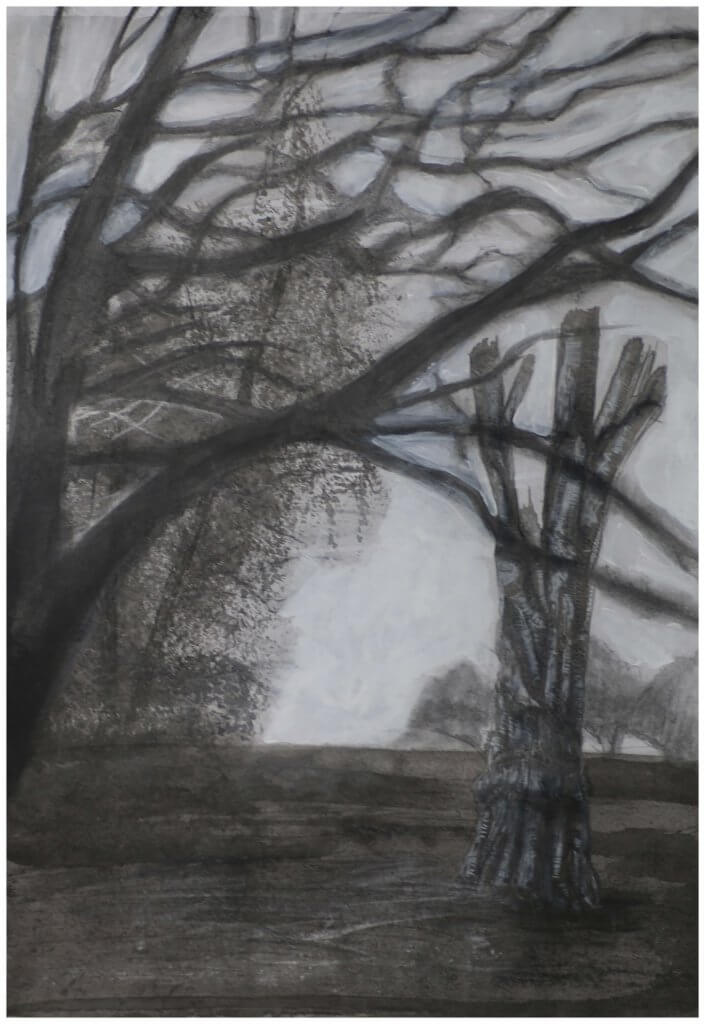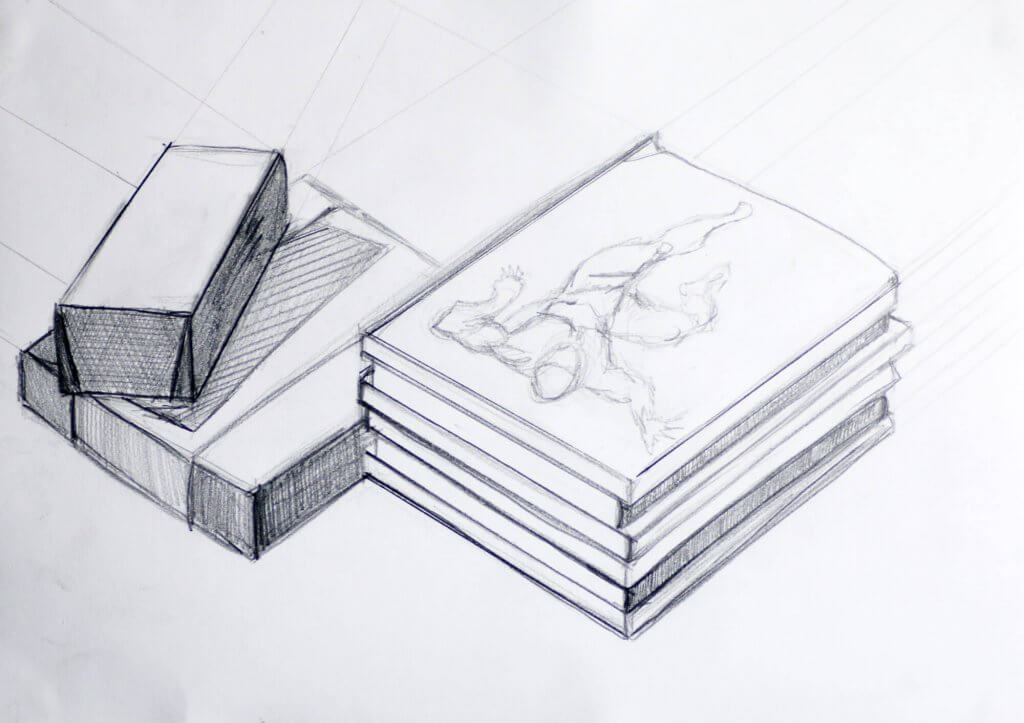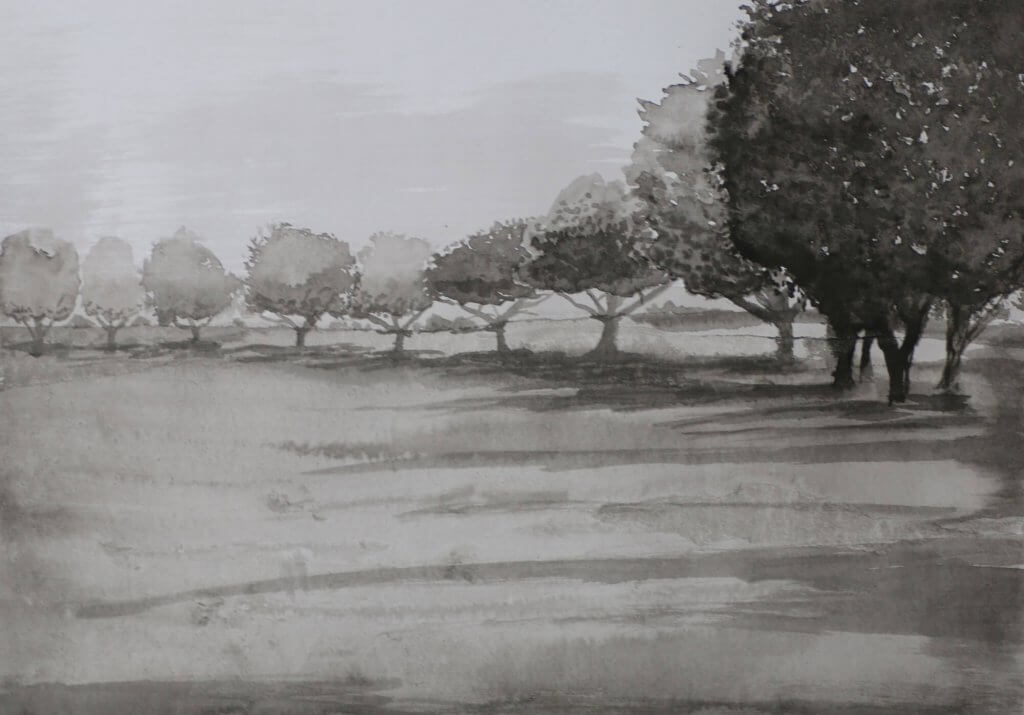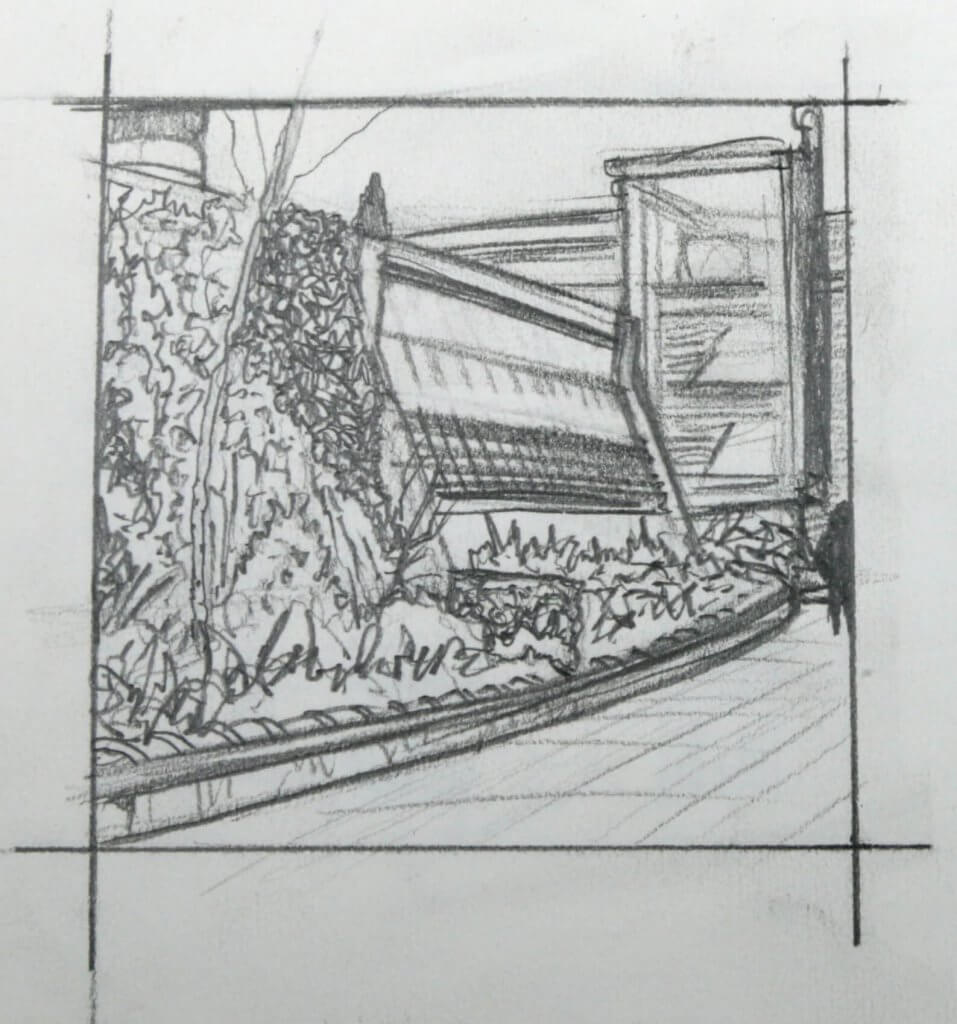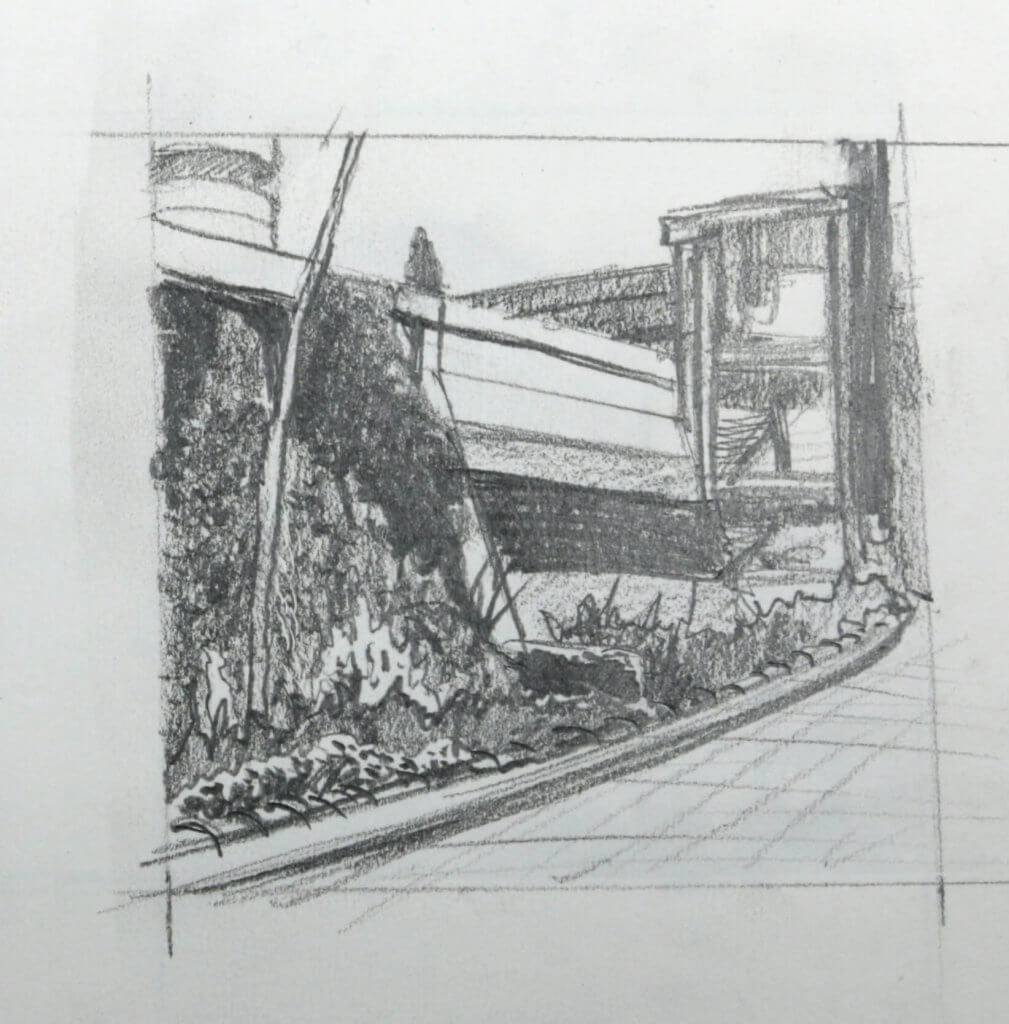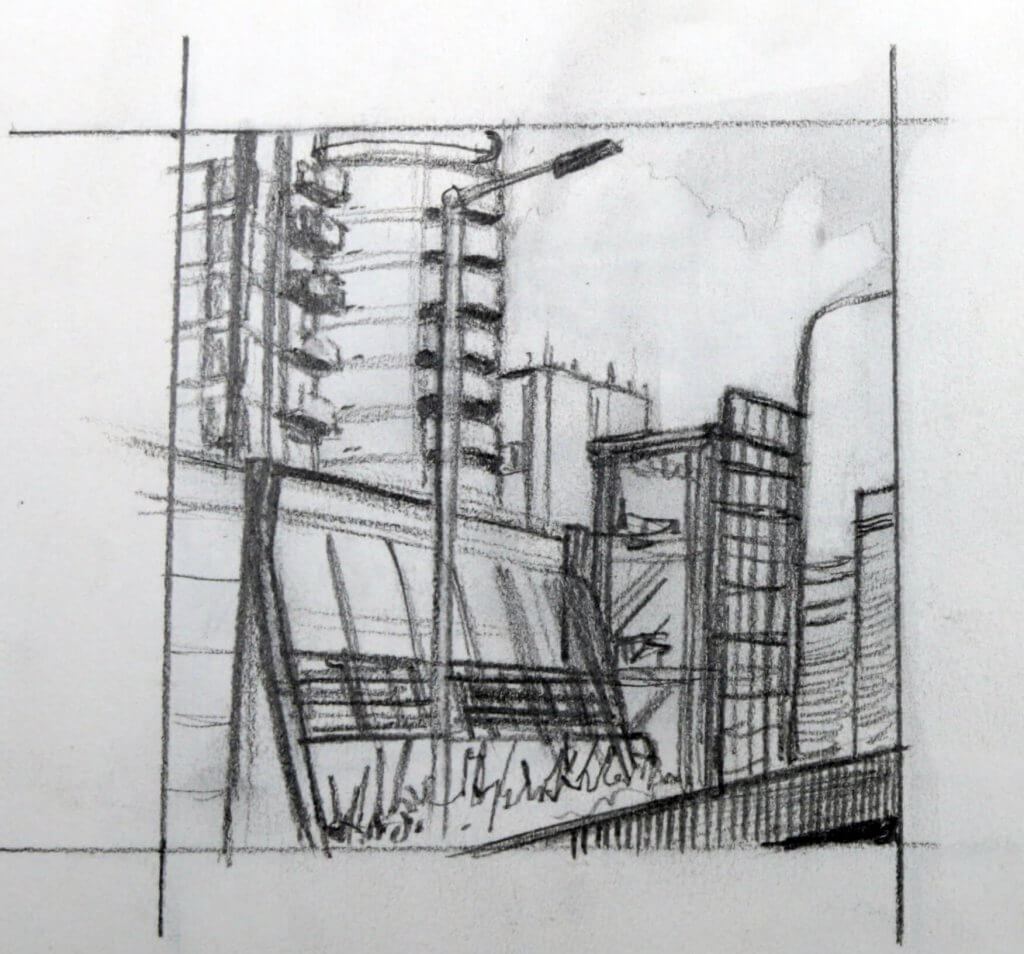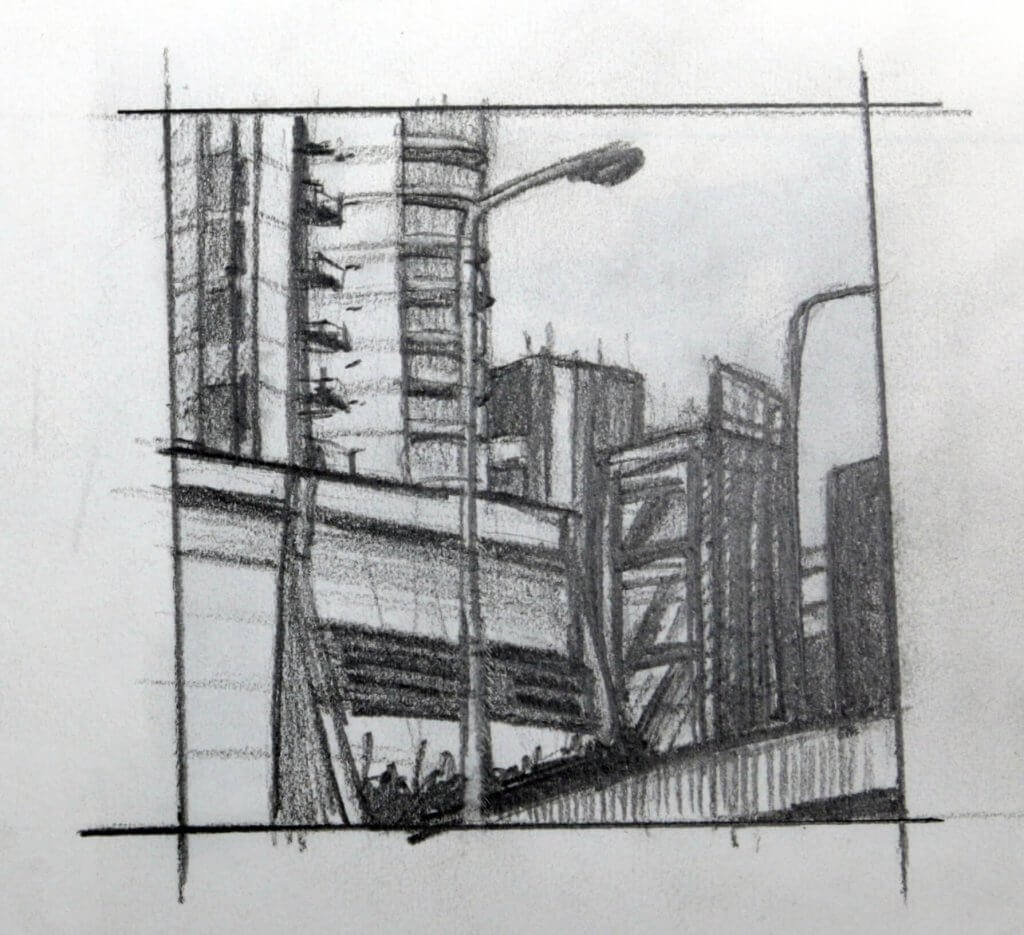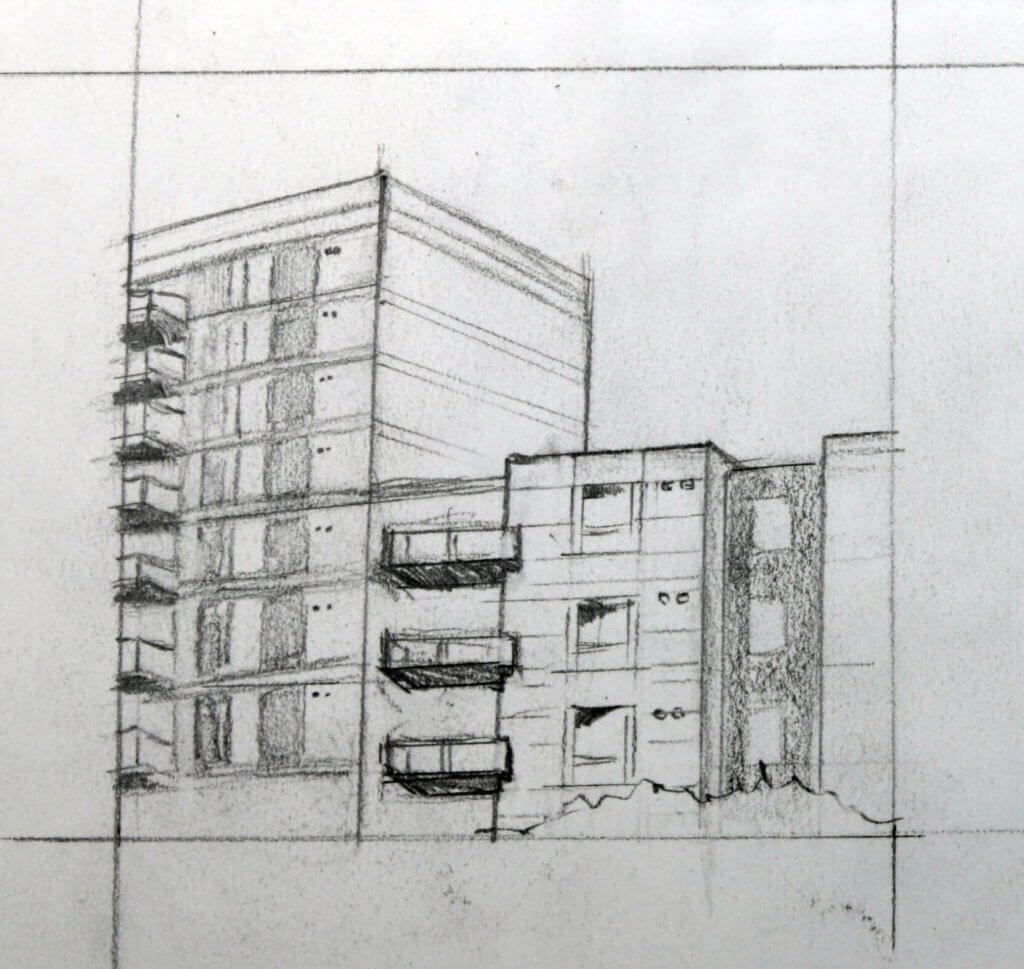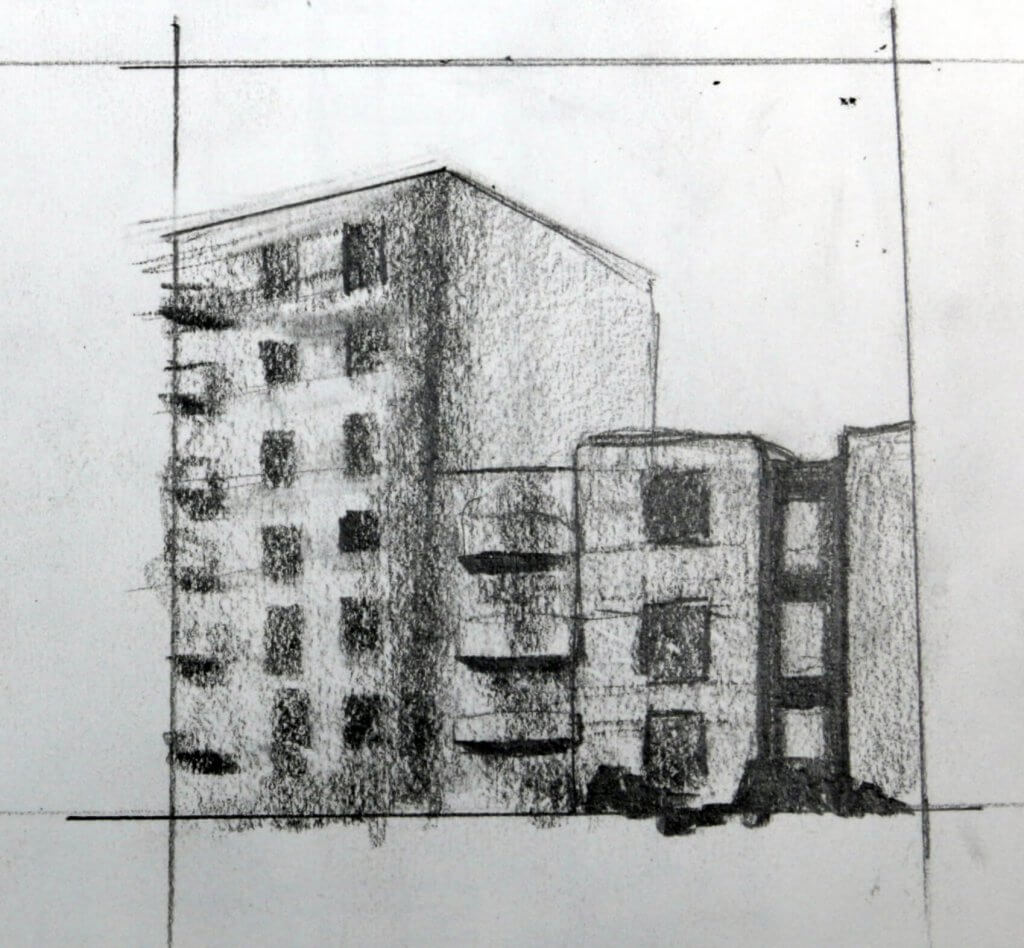This exercise was to familiarize and understand the structure of trees. I ventured out to a nearby forest with paper, a wooden board a selection of graphite sticks and pencils, also a flask as it was cold and very windy.
I positioned myself on a picnic table that was situated among some trees that were a good distance away, I wanted to try and capture the whole shape of the tree as well as its individual parts, the branches, the small vein like twigs and the collected leaves, although the leaves were starting to vacate. I started all my studies with a loose line to represent the trunk, my first attempt was with a graphite stick, I wanted to capture the trees essence, its basic shape and structure so a thicker less precise tool seemed to be a good choice to start.
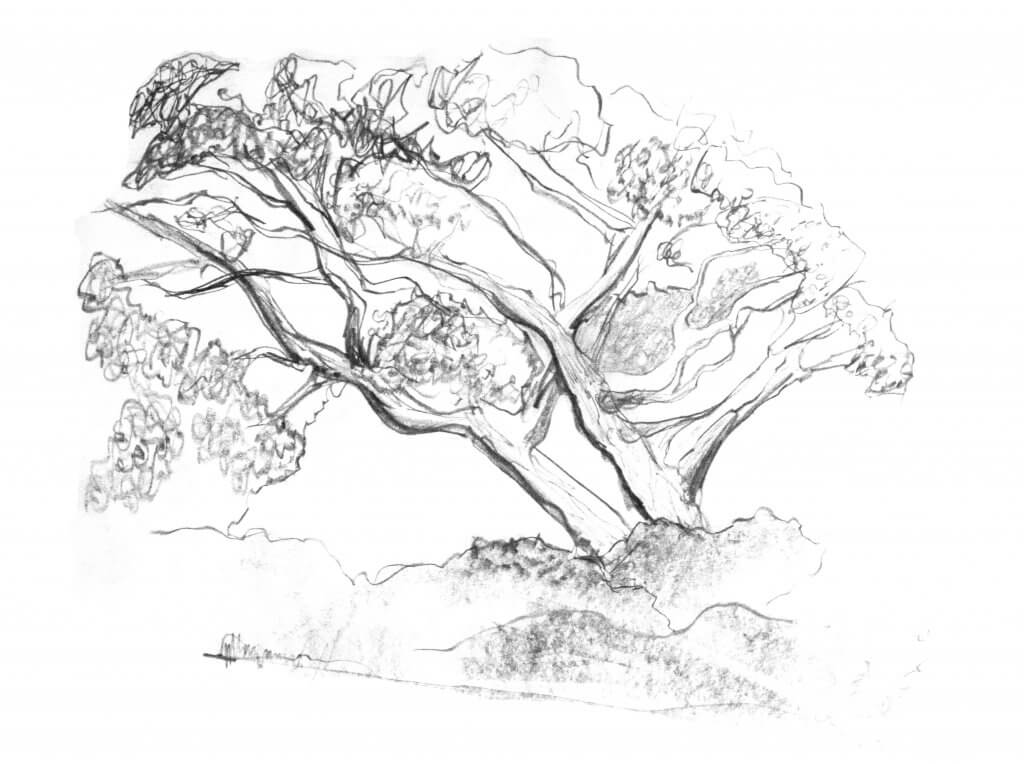
I initially used broad strokes outlining the main trunks, which seemed to have split into two. I then found the biggest branches and tried to follow them along with my eye and translate this into marks with the graphite stick. using the flat side to the sharp edge to create some variation in my line. It was important to not make these too smooth, the branches were irregular and gnarled, this was something wanted to capture, while the graphite was great for broad marks and getting a feel for the tree, I didn’t feel I was able to capture the texture in a controlled way, I moved onto pencils.
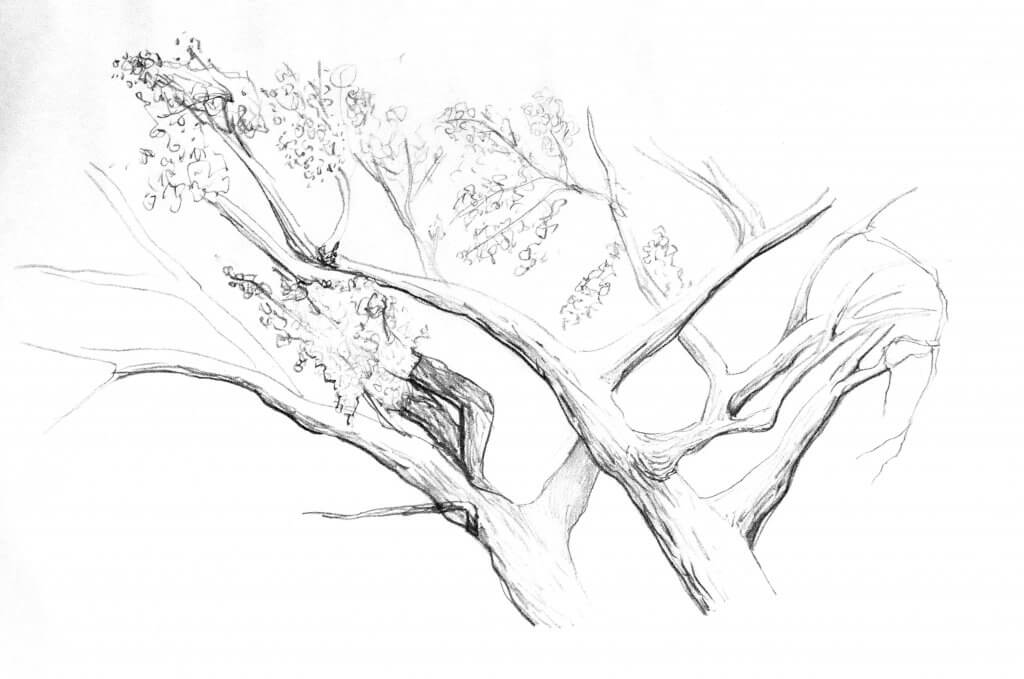
Giving me much more control, over line weight and tone, the pencil seemed to be a much more suitable tool. Drawing the same tree I focused more on the area that had the most interesting shapes, the point that the two main trunks crossed. My pencil was nice and sharp so I sketched the outline and tried to recreate the texture of the tree bark, as it blunted I tried to capture the way the light was reaching the top of the branches and excluding the bottom, I thickened the thin lines, running the dull edge over the thin sharpened pencil lines to achieve this.
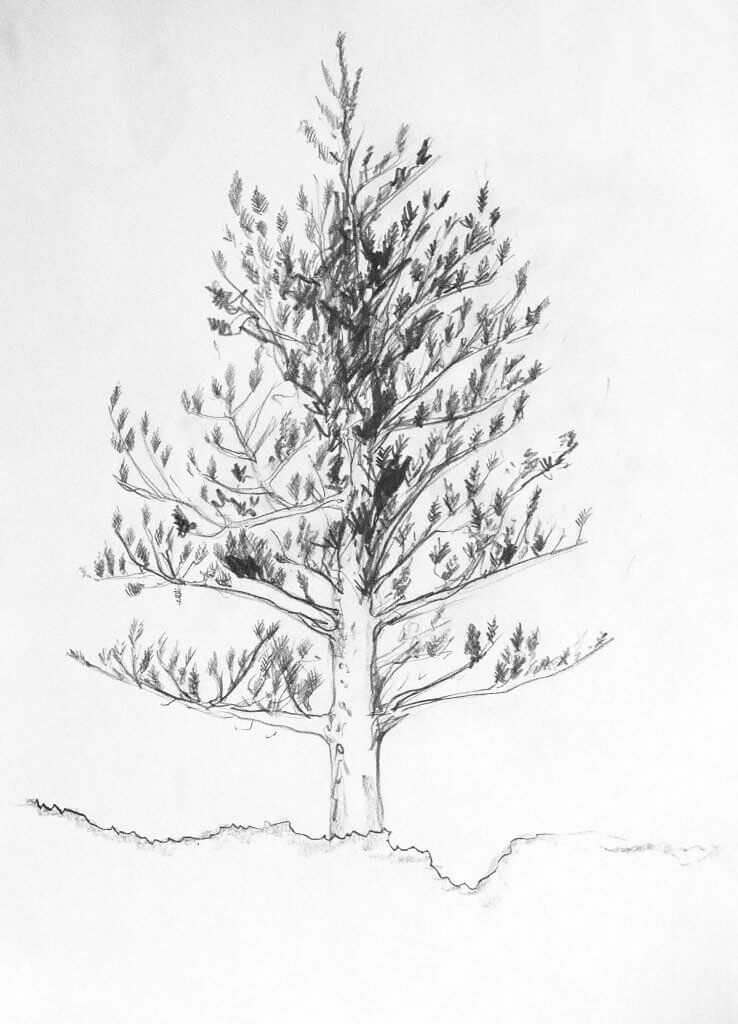
I had mainly been focused on the tapering branches, trying to capture their irregular outline and rendering their cylindrical shape, I wanted to try to quickly work up some leaves, there was some evergreens nearby so I re positioned myself and started to rough in the foliage. the shapes seemed to be made up of many feather like groups of pins, I didn’t fuss over precision, just ,ass, I tried to get a good rhythm going to fill out the tree. I attempted to make some areas more intense to try to show depth and structure. My resulting image didn’t really capture the density of the trees green pins as I’d hoped. it might have worked if used at a small scale but there was some information lost. I sharpened my pencil for another attempt at a more linear structured tree.
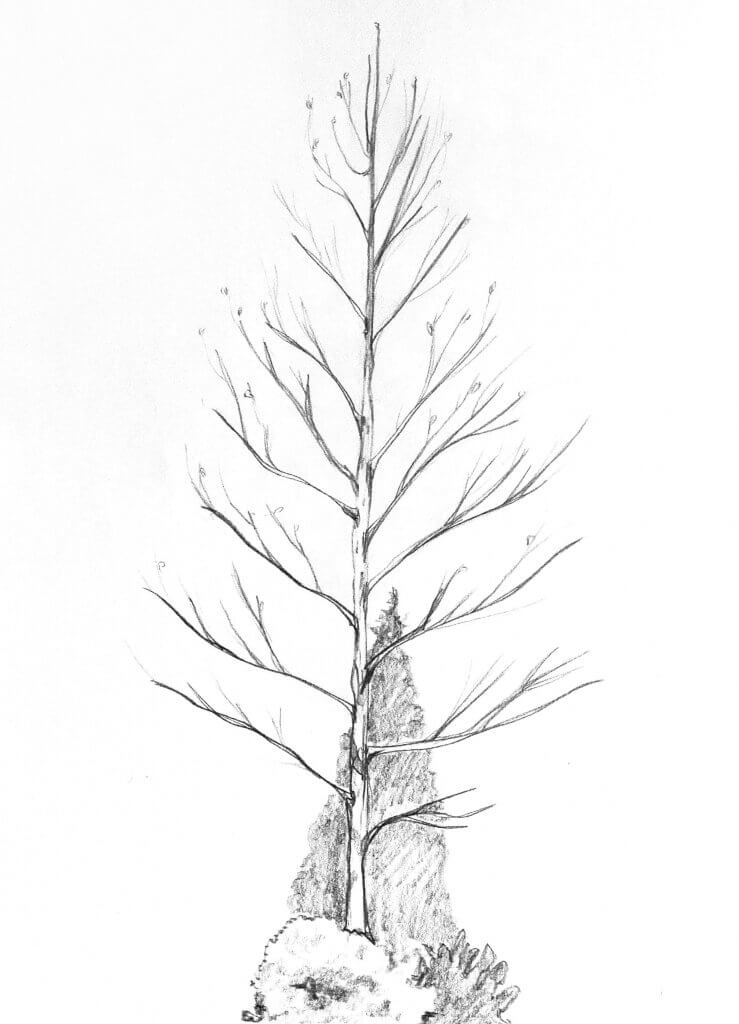
This tree was very easy to interpret, my biggest adversary so far had been the elements, when the wind is blowing hard, not only does it sting your eyes, make your ears hurt but also makes it quite a challenge to follow the intricate details of a tree. this tree was almost engineered in comparison, staggered angled branches, now stripped of all but a few leaves made an excellent subject to study. Drawing from my elbow I tried to make slow flowing marks, my goal was to also lessen my pressure towards the end of each branch, I had varying degrees of success doing, and sometimes I couldn’t resist a follow up stroke. I always started from trunk to the tip of the branch, I sketched in the few remaining leaves. Looking at these trees reminded me of biology text books, the inner workings of the lungs look very much like the trunks, branches and twigs of these trees, each branch giving birth to a smaller more resilient version of itself. It’s strange and almost poetic that these trees, having a similar appearance produce the very thing that our lungs crave.
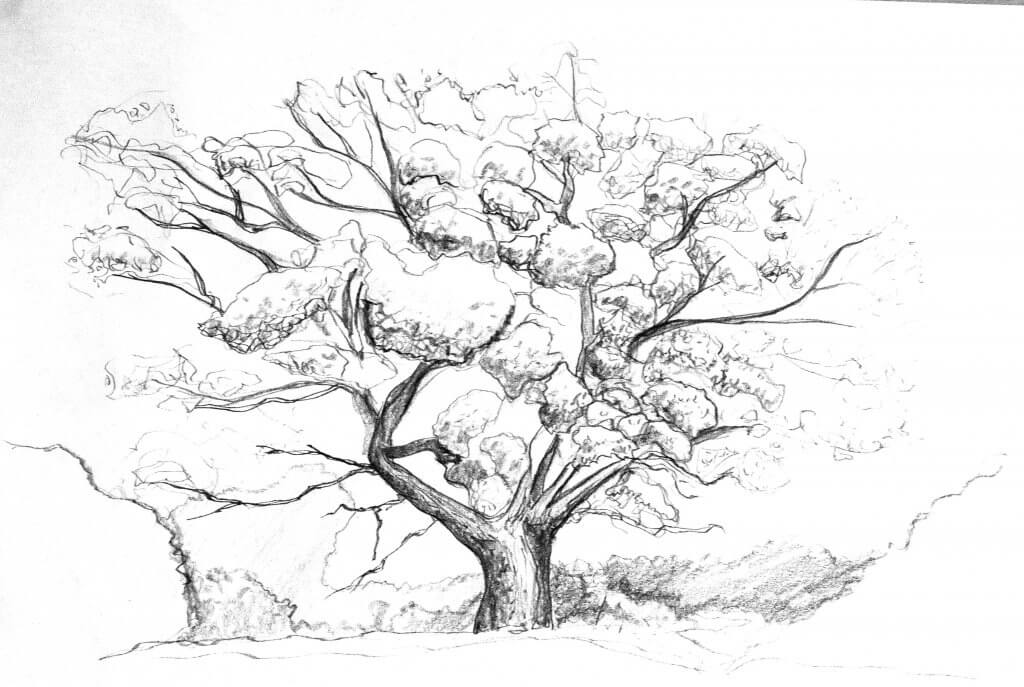
I was getting very cold and tired by now, I just wanted to have another go at that first tree that I tried to capture in graphite, it had a good amount of leaves and it seemed to be still from the wind for the most part. this time I wanted to draw the leaves as a series of collected masses, the result wasn’t too far away from a sorry looking stem of broccoli. I tried to twist my pencil as I drew, this gave me a good variation in line. the softened worn edge being replaced with a flat knife edge as I turned gave a random result, that was enough for today. I packed my things up and started walking back with my large 6mm thick board of MDF I used as a drawing board fighting the wind with every step.
